Zalman ZM-K700M Mechanical Keyboard Review
Product Tour
Build Quality
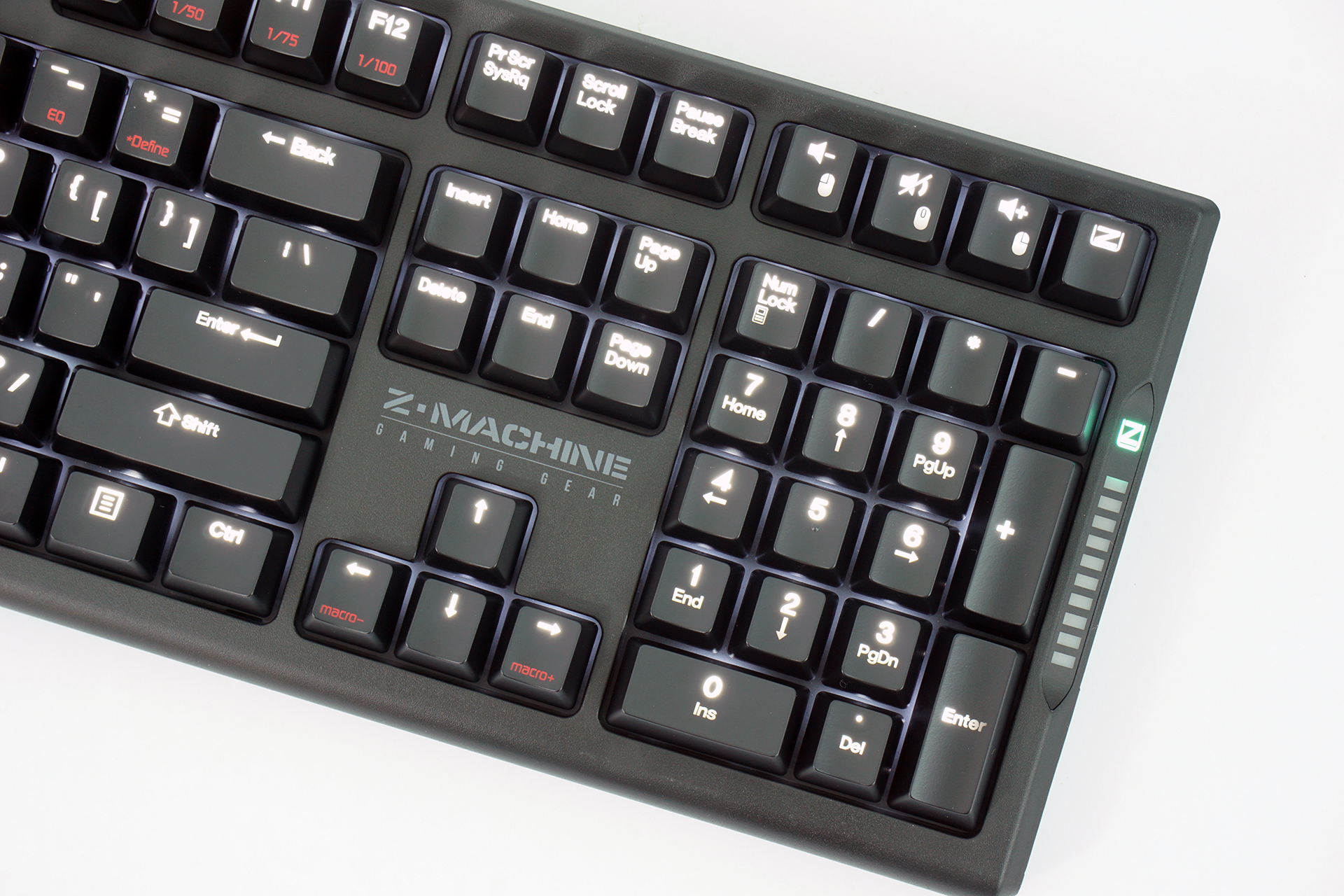

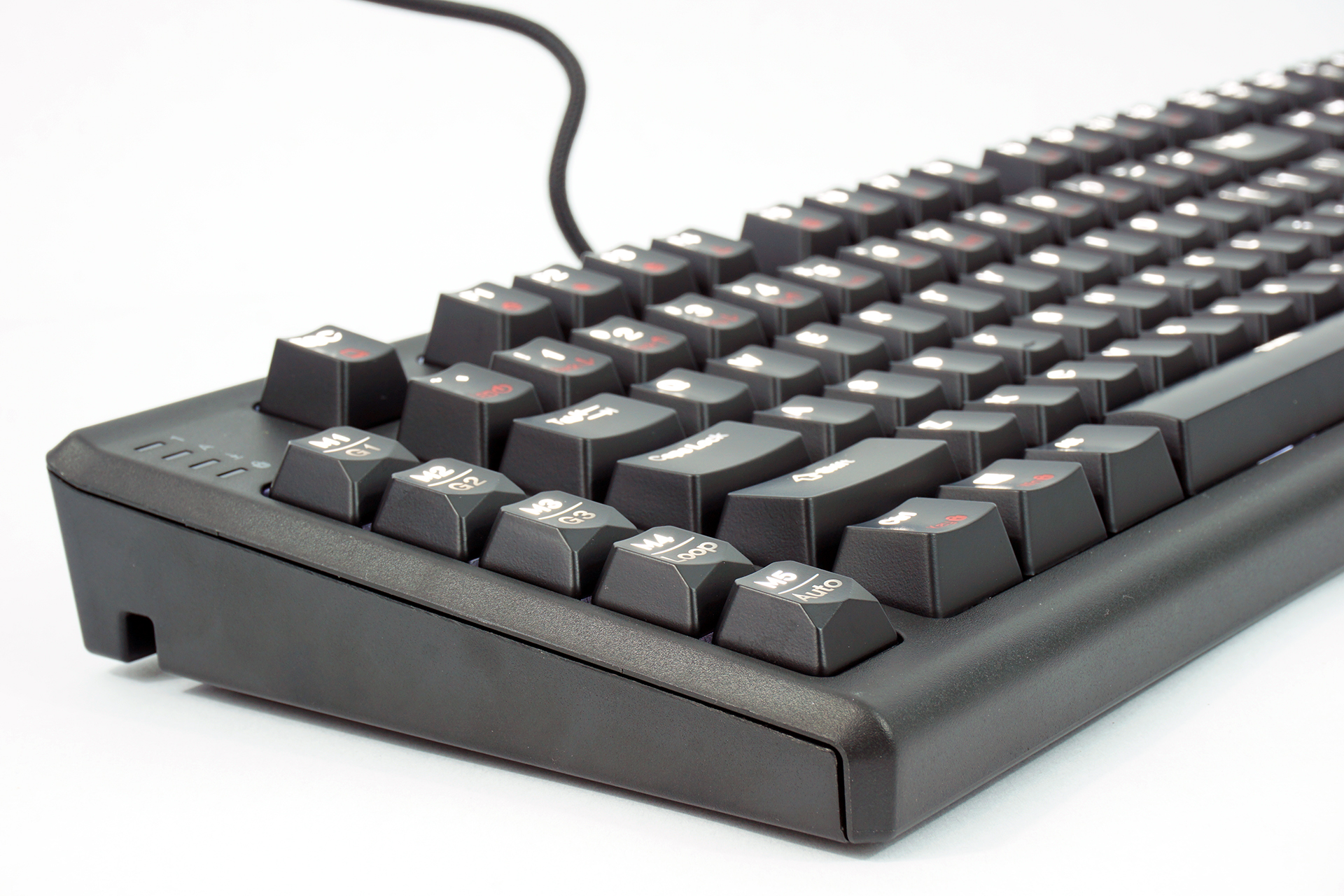
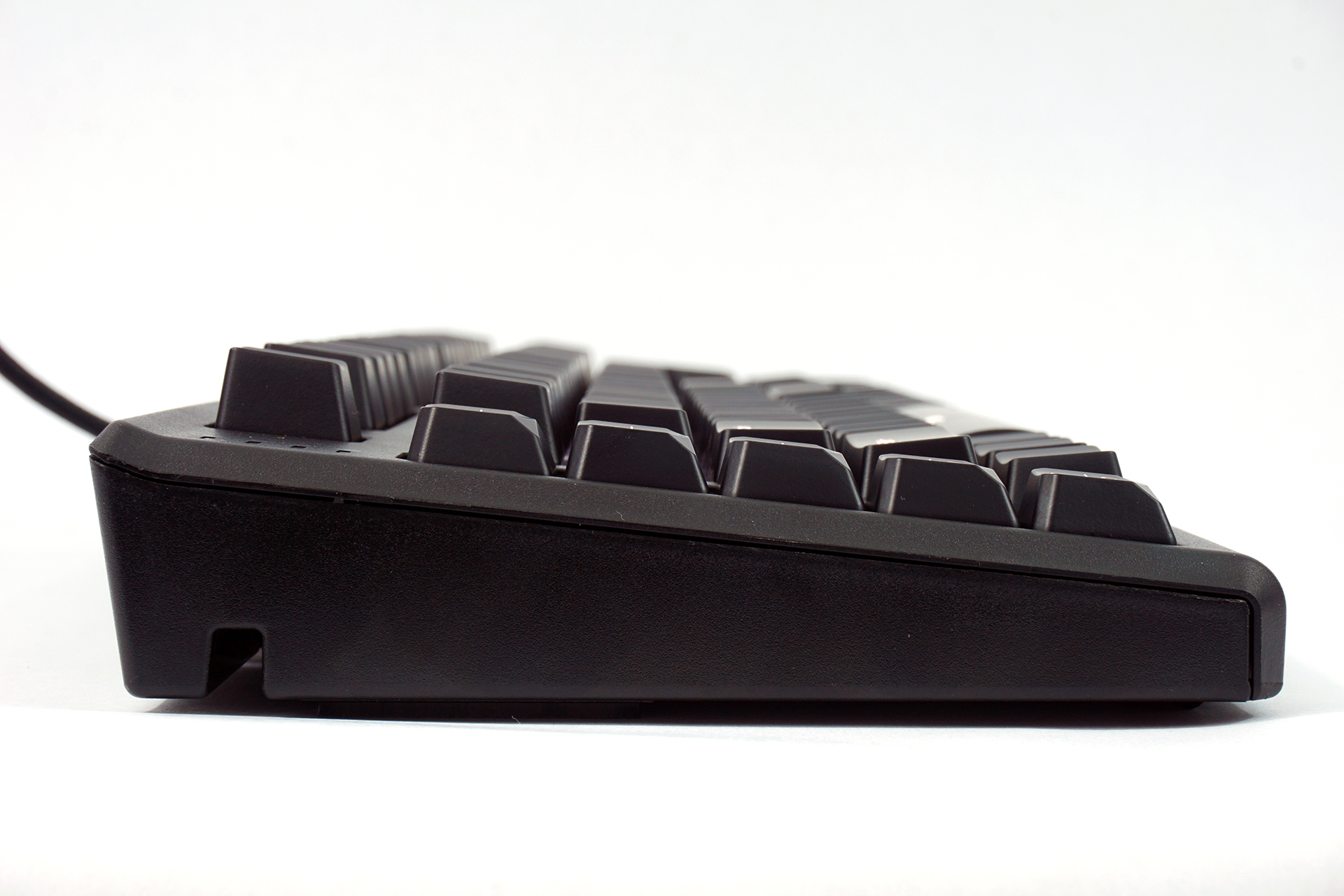
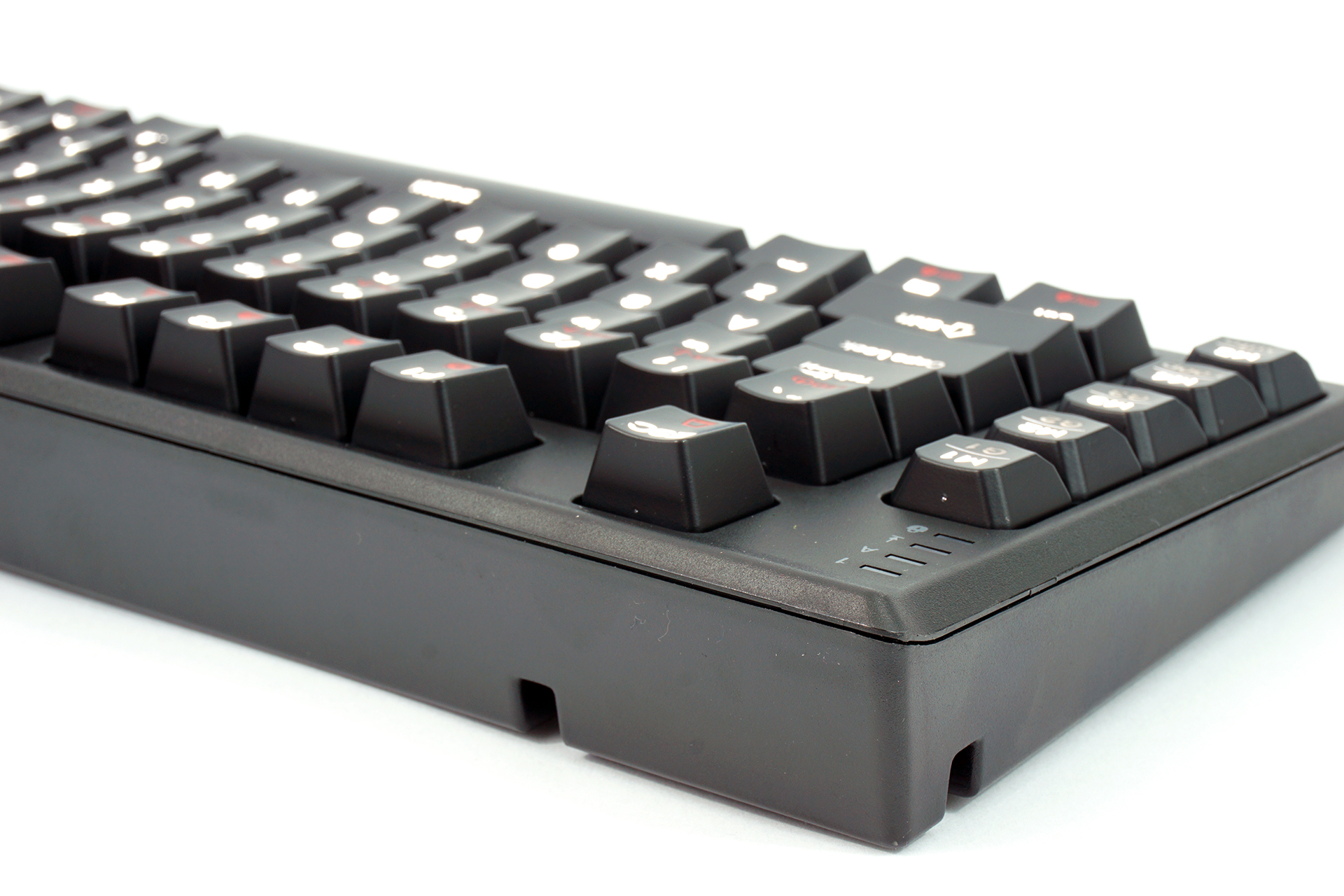
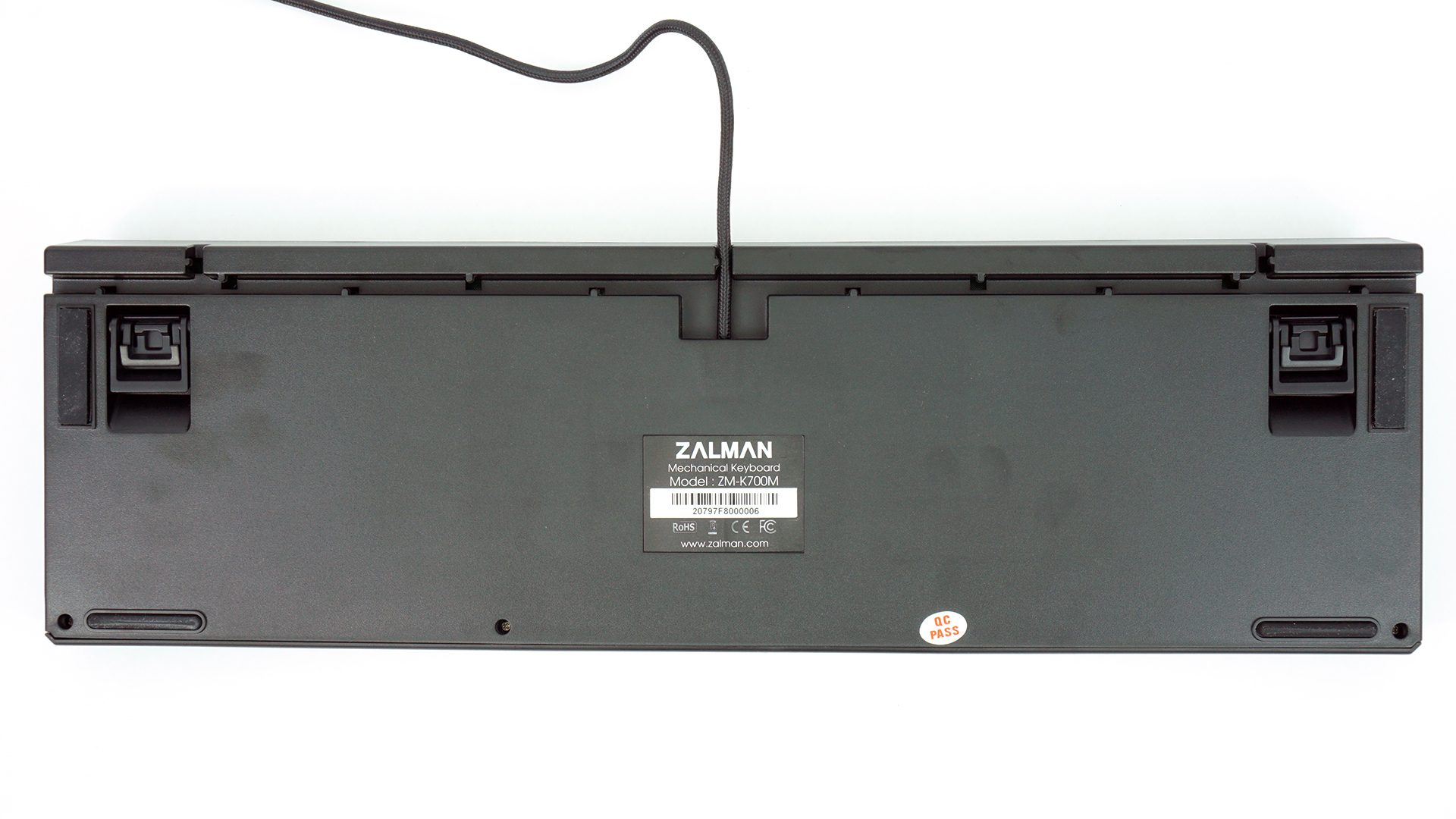
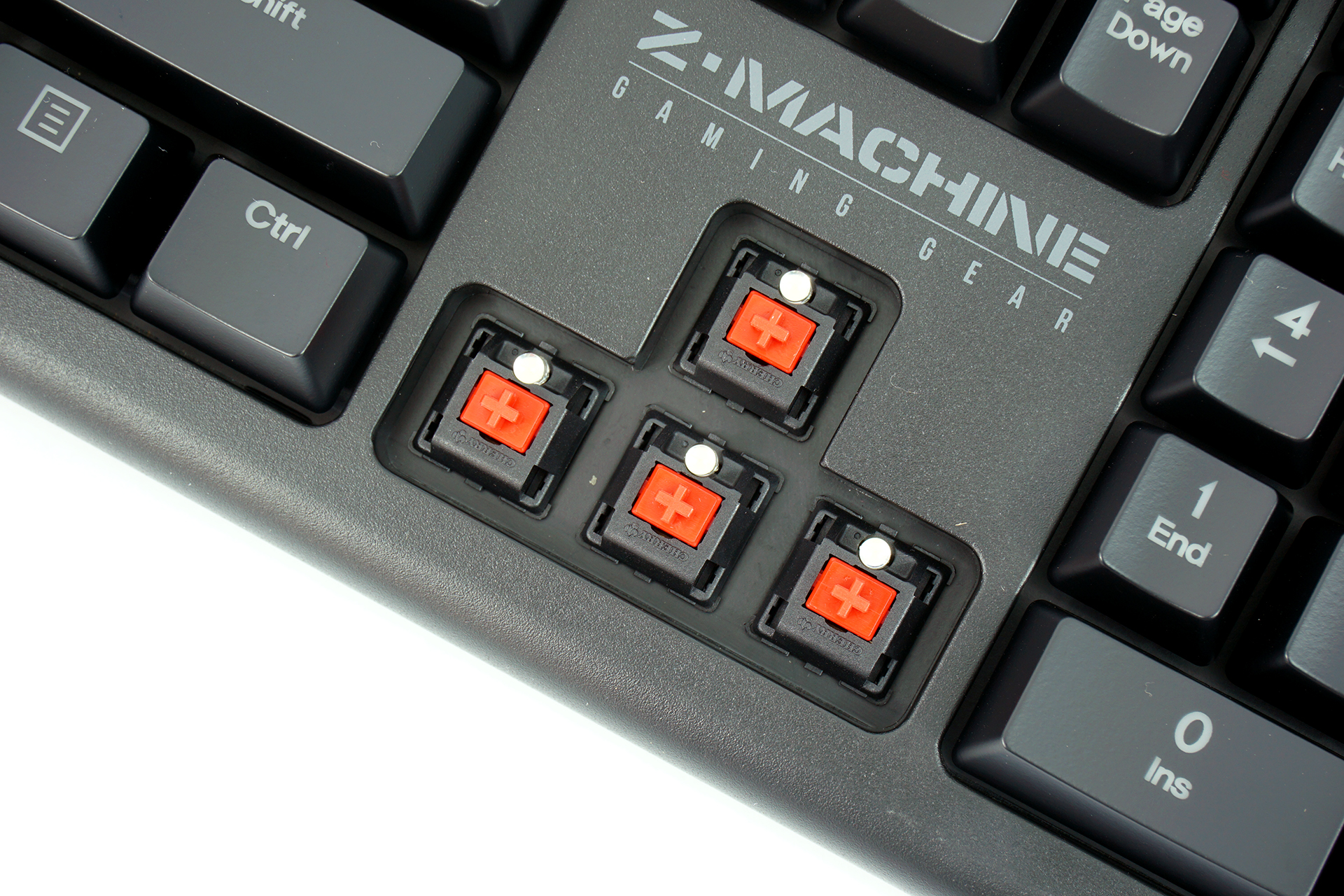
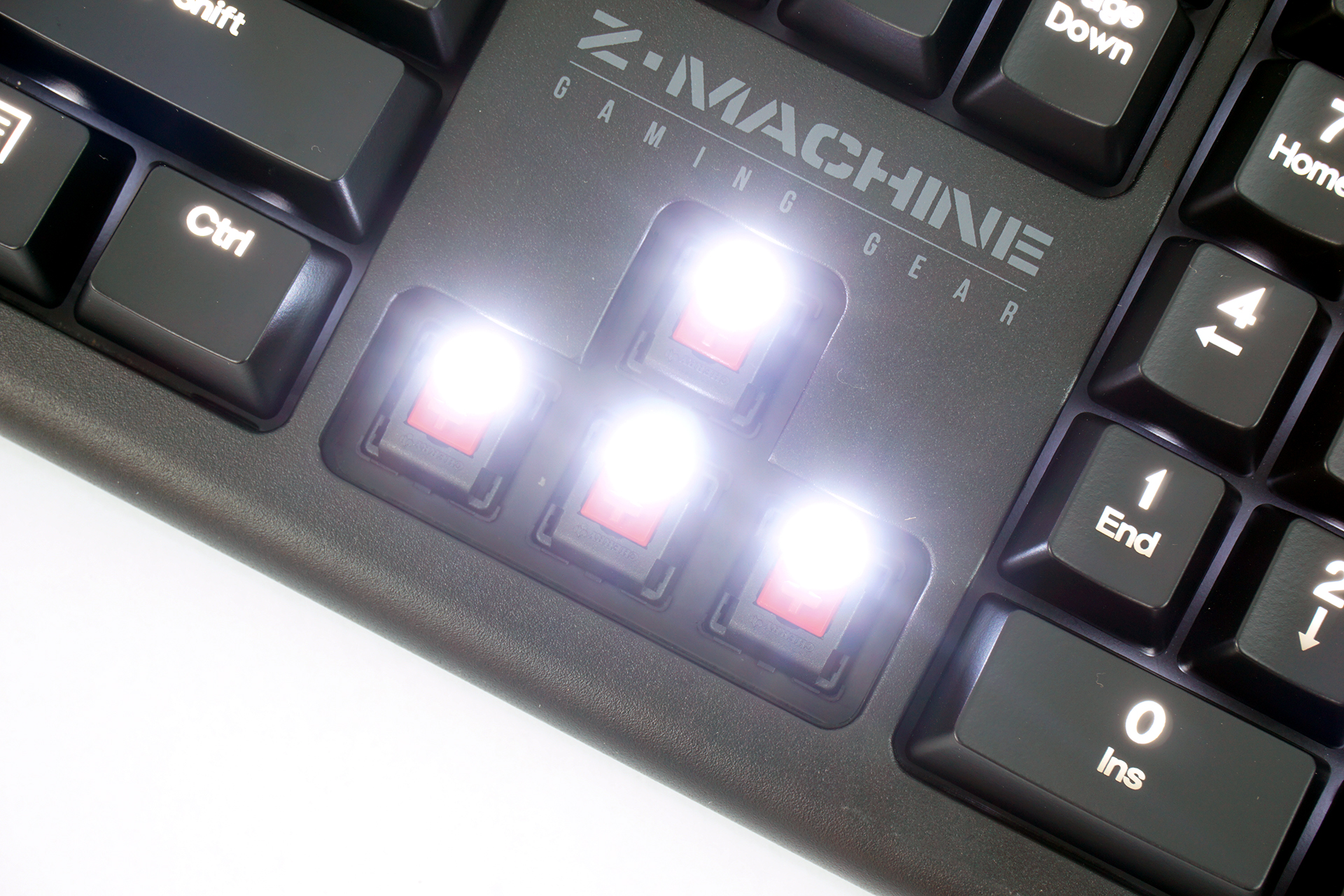


The Zalman ZM-K700M is a surprisingly sturdy keyboard. The outer shell is constructed of thick plastic, and there is a steel plate holding all of the switches in place over the PCB, both of which add to the keyboard's overall heft. The chassis will bend slightly if you pick it up and twist it, but not a worrisome amount. The cable is braided and non-removable, with three tracks on the underside of the keyboard allowing you to route it out of the left, right or center.
The rubber feet on the back of the keyboard are thick, and firmly ground the keyboard even during the most vigorous gaming sessions. There are actually two sets of flip-down feet to allow users to customize the tilt of the keyboard, each with heavy rubber bottoms. These rubber feet on the ZM-K700M are in fact some of the best I've seen.
The ZM-K700M also has a standard ANSI layout, meaning that aftermarket keycap sets should fit without any issue. Keep in mind many of these sets don't come with extra caps for the macro keys. Many popular gaming boards like the Corsair Strafe and Razer Blackwidow Chroma have uncommon bottom row layouts, making replacing their keycaps next to impossible. For many people, changing and upgrading keycap sets is a must, and having a standard layout is an essential feature.
Switches
The ZM-K700M uses Cherry MX Red mechanical switches, which are rated for 50 million keypresses. Cherry MX Reds are linear, non-clicky switches that have an actuation force of 45g, making them one of the lighter switches on the market. The light spring and linear construction make extended gaming sessions comfortable and help reduce finger and hand fatigue.
The MX Red switches are plate-mounted in the ZM-K700M, giving the switches a crisp, smooth feel. The larger keys use Cherry stabilizers, making removing and swapping keys a breeze. The common complaint about Cherry stabilizers is that they can feel mushy or inconsistent, but they felt just fine on the Zalman. The spacebar and larger keys smoothly actuated regardless of where they were pressed.
Currently, the keyboard is available only with Cherry MX Red switches, another sign that this keyboard is really being geared towards gamers. Many typists prefer some sort of tactile feedback in a switch, although switch preference really comes down to personal taste.
The manual was surprisingly helpful and clearly written, for the most part, although it's worth pointing out that there were a few features that I never managed to get to work. FN+H was supposed to open an online user manual, but I could never get any results. FN+G did in fact open Google as stated in the manual, though, so some of the factory defined shortcuts worked without a hitch.
Get Tom's Hardware's best news and in-depth reviews, straight to your inbox.
Key Caps
The key caps are ABS plastic and have laser-etched legends to allow the backlight to shine though. The function layer shortcuts appear to be laser-etched as well, but they're filled with red printing that does not allow as much light to shine through. This is mainly due to the fact that the LEDs are mounted at the top of the switch, and the function shortcuts are etched on the bottoms of the keycaps.
There are three LEDs behind the spacebar to evenly light the Zalman logo etched into the center of the spacebar, though keys like Caps Lock and Enter look slightly uneven due to the fact that they have only a single LED lighting the key. The lighting on the numpad Enter is especially uneven because the LED is mounted on the left side of the switch.
The five macro keys are unique and have a shorter profile with angular cutouts in the sides. These don't make the keys any easier or harder to press—they're for aesthetics only. The shorter uniform profile does make it slightly easier to quickly and accurately hit the macro keys with a pinky when you're homed on WASD during gaming sessions.
Lighting
The ZM-K700M features white per-key lighting. There is a single RGB LED behind the Zalman logo above the speed meter that is on only when Z-Key mode is active (which we'll discus in the Key Rollover section). For many people, the lack of RGB backlighting will be a huge blow to the overall appeal of this keyboard, but for others the classy white lighting may be sufficient.
A unique feature that I haven't seen on a keyboard before is the ability to set a base level of backlighting, separate from the lighting modes. This means, for example, that you could have a low light setting on the entire keyboard but turn on Key LED mode and have WASD light up to maximum brightness. All other modes function on top of this base level, as well.
Other modes include Key Wave mode, Key Touch mode, "Breath" mode and Equalizer Mode. Equalizer mode actually reacts to ambient room noise, so the louder the background music or the louder you scream in a game, the more lighting you get on the three selectable patterns.
Key Mask uses the key selected by the user (FN+F9 in Define mode) and makes them the only functioning keys on the keyboard. This would be ideal as a gaming mode where you would want to prevent any accidental key presses of unused keys. You can use mask mode with Key LED mode as well, allowing you to have just the active keys glowing on the keyboard.
A feature unique to the ZM-K700M is the speed meter LED cluster on the right side of the keyboard. Along with the macro keys on the left side, this is one of the only visual features that makes the ZM-K700M immediately recognizable as a gaming-oriented keyboard. However, I found the speed meter to be pretty useless. It visually reacts to typing speed, volume changes, LED brightness, and macro running speed.
For most of these modes, the lights just blink but don't actually visually give you any real data. In volume mode, for example, the lights simply blink from top to bottom or bottom to top, depending on the volume changes, but they have no correspondence to minimum and maximum volume levels. Anytime you are typing on the keyboard, the LEDs bounce up and down depending on speed, although I was never able to find any correlation between WPM and the number of lights illuminated on the meter. This was arbitrary feedback that I felt was more of a distraction than anything. Unless I was really banging on the keyboard, no more than the bottom three LEDs were ever lit. Overall, the speed meter LED is little more than a gimmick.
Current page: Product Tour
Prev Page Introduction And Specifications Next Page ZKeyFormation Software